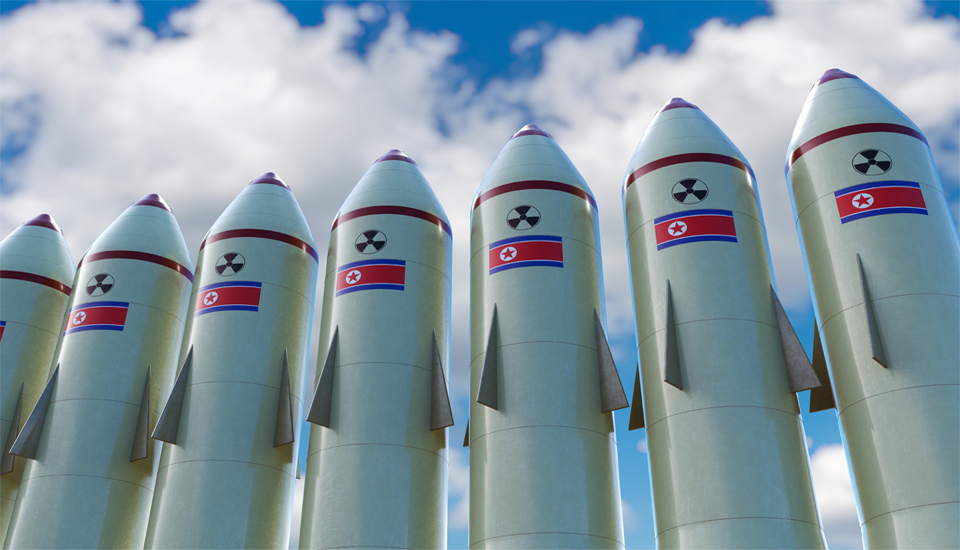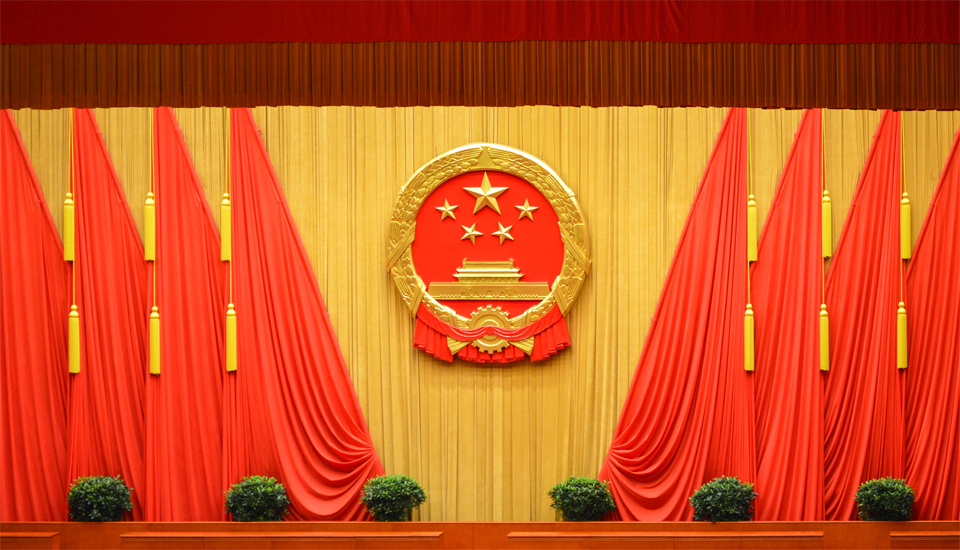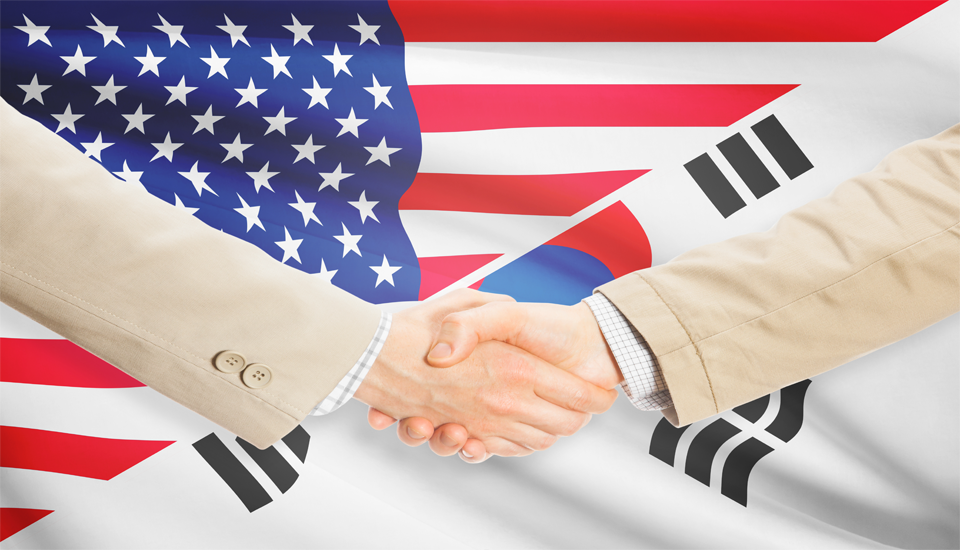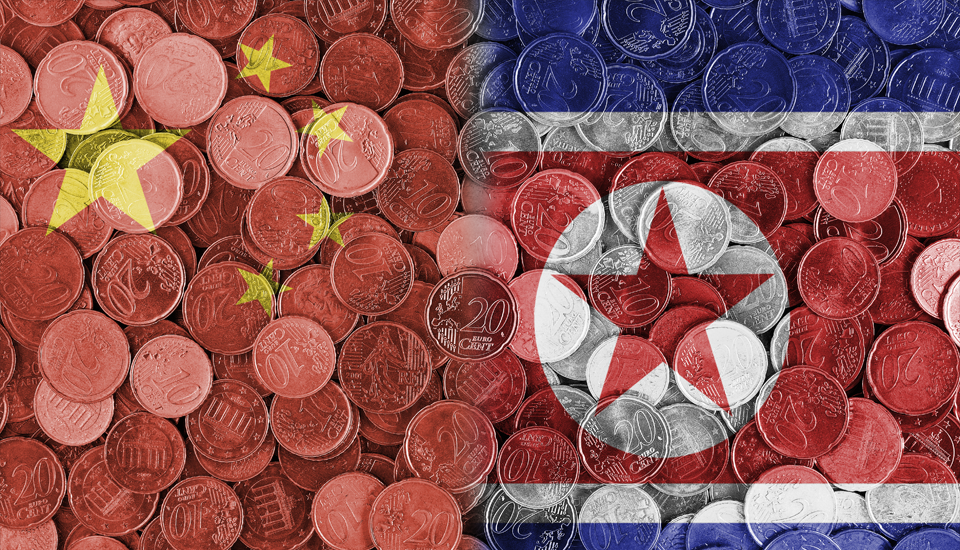
Analysis of North Korea’s Nuclear Force Policy Act: Intentions and Drawbacks
Commentary | November 04, 2022
Ildo Hwang
Associate Professor at Korea National Diplomatic Academy
Recently promulgated “Law on DPRK’s Policy on Nuclear Forces” reveals North Korea’s intention to use nuclear weapons in a war-fighting capacity. Ildo Hwang, Associate Professor of Korea National Diplomatic Academy, points out the similarities between North Korea’s nuclear policy and Russian 2020 Basic Principles of State Policy on Nuclear Deterrence and the possibility of Pyongyang’s adoption of Russia’s “escalate to de-escalate” strategy on the Korean Peninsula. However, Dr. Hwang argues that North Korea is not likely to gain any leverage through this new Policy Act, given that Pyongyang is yet to secure the Assured Retaliation capability in the eyes of Washington. Nevertheless, Dr. Hwang claims that North Korea’s attempts to lower the nuclear threshold can lead to the inadvertent use of nuclear weapons, thus jeopardizing the security of North Korea as well as the stability of Northeast Asia.
Ever since North Korea’s nuclear capabilities made significant advancements in the mid-2010s, experts have been keenly interested in whether North Korea’s nuclear doctrine will remain on the level of a Chinese-style minimal deterrence or evolve in a direction of denial deterrence. Pyongyang clearly answered this question by dialing up its tactical nuclear development and nuclear war-fighting capability following its 8th Congress of the Workers’ Party of Korea in January 2021. This represented an official shift from its initial attitude of using nuclear weapons as a last resort for retaliation, to a stance that implies the first use of nuclear weapons during a conventional war. Admittedly, the strategy to deter conventional military actions by threatening to use nuclear weapons is not an entirely new concept. As the cases of Pakistan since the 2010s and NATO during the 1960s illustrate, countries that share a border with a potentially belligerent state and feel that their own conventional forces are comparatively inferior have largely resorted to a doctrine of repelling a conventional invasion via the threat of tactical nuclear attacks. [1] However, unlike these nuclear doctrines and postures, which limit the conditions for using tactical nuclear weapons to a case of a large-scale ground invasion, North Korea’s recent nuclear manifesto and doctrines have a significantly lower and more arbitrary nuclear threshold.
The culmination of attempts to maximize its deterrent effect by demonstrating extreme uncertainty was the “Nuclear Force Policy Act,” adopted by Pyongyang on September 8th. of this year. A closer look into the doctrine’s specific phrases, forms, and premises clearly shows the direction of Pyongyang’s recent doctrines and posture on nuclear war-fighting capabilities.
Ⅰ. The Mission and Command and Control of Nuclear Forces
North Korea had previously adopted the law “On Consolidating the Position of Nuclear Weapons State for Self-Defense,” (hereinafter “Nuclear-State Act,”) in April 2013. Article 11, Paragraph 1, of the Law on DPRKs Policy on Nuclear Forces, however, now dictates that the new law replaces the functions of the Nuclear-State Act. The biggest difference in the details between the two laws revolves around the part concerning the ‘mission of nuclear force.’ Article 2 of the 2013 Nuclear-State Act stipulates the use of nuclear weapons is to “deter or repel invasion or attack from hostile forces and make annihilative retaliatory strikes against the origins of provocation.” Yet in Article 1 of the new law, though the first paragraph states that “the main mission is to deter a war by hostile forces,” the second paragraph states that it “shall carry out an operational mission for repulsing hostile forces’ aggression” to achieve victory if “war deterrence fails.”
In other words, the primary focus of the 2013 Nuclear-State Act was on threatening ‘annihilative retaliation’ to deter an adversary’s potential use of nuclear weapons. Under this law, launching nuclear weapons meant risking mutually assured destruction. In contrast, this year’s mandate additionally mentions achieving a “decisive victory in war”, revealing North Korea’s intention to use nuclear weapons in a war-fighting capacity. This means the North Korean regime would be planning to survive or even prevail after using its nuclear weapons.
These characteristics of the new law are more evident in the five conditions stipulated under Article 6, clarifying the ‘specific conditions for the use of nuclear weapons.’ All of these conditions have significantly lowered the nuclear threshold compared to the declaratory policies of other countries, in the sense that they do not distinguish whether an attack from the enemy is nuclear or conventional. This demonstrates an extreme escalation in its war-fighting means, since North Korea has now signaled they would use nuclear weapons even in a conventional war. By lowering the nuclear threshold as much as possible and keeping its nuclear weapons on a “hair-trigger” alert, North Korea aims to discourage any military actions from its adversaries.
As such, the question of under which circumstances will nuclear weapons be used by a nuclear-armed state and the question of how a nuclear-armed state should manage and control nuclear weapons are on two sides of the same coin. In particular, countries such as North Korea, which want to threaten rapid nuclear escalation in case of a conventional war, need to display a simplified process for deciding and utilizing nuclear weapons, or show there is an efficient delegation of nuclear authorization to field commanders in case of a contingency. This issue is related to the so-called ‘nuclear command and control’ (NC2). While paragraph 1 and 2 of Article 3 of the new law states “the nuclear forces shall obey the monolithic command of the President of the State Affairs” and “the President of the State Affairs shall have all decisive powers concerning nuclear weapons”, paragraph 3 states that “if the command and control system of the nuclear forces is in danger of an attack by hostile forces, a nuclear strike will be automatically and immediately carried out to annihilate hostile forces according to the operation plan decided in advance.” While paragraphs 1 and 2 mention an assertive command and control structure, paragraph 3 sets up a delegative command and control structure operating in parallel, giving flexibility in case of a contingency.
If Pyongyang seeks to adopt the doctrine of using tactical nuclear weapons ahead in conventional warfare to gain an upper hand, it will face the risk of a decapitation strike or a disarming strike from the U.S., which possesses overwhelming nuclear capabilities. If Washington is concerned about North Korea’s ICBMs surviving the U.S.’ first strikes and missile defenses, it could impose constraints on these response options. However, it seems unlikely that Washington would view North Korean nuclear forces as having surpassed the threshold of assured retaliation capabilities in the near future. [2]
Therefore, North Korea, as of now, does not have any adequate measures to repel the U.S.’ massive nuclear retaliation capabilities. Without this option, Pyongyang’s calculations of gaining the upper hand for a conventional war with the first-use threat of nuclear weapons seem militarily unfeasible. North Korea’s so-called ‘automatic nuclear strike’ also appears to be a desperate countermeasure to preclude the U.S.’ large-scale nuclear retaliation until the North can upgrade its assured retaliation capability over a certain level with the development of MIRV-enabled ICBMs or the acquisition of reliable SLBM capabilities. This is an attempt to avoid the complete removal of its leadership or a decapitation strike on Kim Jong-un following its first use of nuclear weapons.
II. The Similarities with Russia’s 2020 Basic Principles of State Policy on Nuclear Deterrence
Another characteristic of the 2022 Nuclear Force Policy displayed in the document’s structure and wording, is its marked resemblance to Russia’s official nuclear policy document. Since the end of the Cold War, the Russian government has produced five documents on its nuclear doctrine. The latest version, released in June 2020, is the presidential directive “The Basic Principles of State Policy of the Russian Federation on Nuclear Deterrence” (Об Основах государственной политики Российской Федерации в области ядерного сдерживания, hereinafter “Basic Principles”), which seems to have been referenced the most by Pyongyang when drafting its Nuclear Force Policy Act. Both are documents legislated by decrees and presidential executive orders respectively, and bear resemblance in the length and composition of key provisions.
The two nuclear documents also are remarkably similar in content. Article 3, paragraph 19, of Russia’s 2020 “Basic Principles” lays out the conditions for nuclear weapons usage, while Article 1, paragraph 4, elaborates on the objectives of the policy, with Article 2, paragraph 15, stipulating the nuclear readiness of both nuclear deterrence and combat usage. As such, both nuclear documents stipulate the option of first use of nuclear weapons for conventional warfare; a two-pronged doctrine to use nuclear weapons for deterrence and increase in war-fighting capability; and the intention to offset the inferiority of its conventional forces by lowering the nuclear threshold.
Russia’s 2020 Basic Principles have fleshed out the ‘Escalate to De-escalate’ doctrine designed to deter or back down military action from the U.S. or NATO. It had proved the existence of a Russian nuclear doctrine, which had been questioned by members of the U.S. military and academia. It is generally viewed that the ‘Escalate to De-escalate’ doctrine has become actualized by the Kremlin’s repeated declaratory inclination in deploying nuclear weapons in the ongoing Russian-Ukraine War. While it cannot be said the nuclear doctrine attributes to the U.S. and NATO’s reluctance for direct military intervention, the possibility that Pyongyang has judged Russia’s doctrine effective cannot be ruled out, as it rushed to promulgate related doctrines and declaratory policies. With the Nuclear Force Policy Act, Pyongyang intends to recreate a similar scenario in the Korean peninsula, thereby deterring U.S. extended deterrence and wartime reinforcements.
III. Implications
However, there exists a crucial difference between the two. North Korea is not Russia. Needless to say, the ‘Escalate to De-escalate’ doctrine might work for Russia, as it possesses the capabilities for mutually assured destruction (MAD). The fundamental idea behind the doctrine is that the U.S. has no choice but to seriously consider Russia’s threat of nuclear escalation, as this would potentially end in annihilation for both sides. However, in the case of North Korea, Washington views that Pyongyang’s strike capabilities fall short of even an assured retaliation, let alone assured destruction. Thus, North Korea’s imitation of Russia’s doctrine of first use of nuclear weapons will unlikely deter Washington from implementing extended deterrence. Whatever Pyongyang pursues as its strategy, Washington’s current perception that North Korea has not achieved the level of assured retaliation will be prevalent in the approaching future.
Due to discrepancies in the reality of its actual capabilities and the ambitions of its nuclear doctrine, the North is incessantly exploring clever ideas to create an atypical structure of mutual nuclear deterrence that can deter Washington’s massive nuclear retaliations even after it launches its first nuclear strike. Forementioned extreme measures taken by Pyongyang to lower the nuclear threshold, efforts to emphasize the arbitrary use of nuclear weapons, and the threat of using a delegative command structure or automated nuclear retaliations all reflect these desperate attempts. The problem is that these attempts are likely to tremendously increase the likelihood of an inadvertent usage of nuclear weapons. Even a limited regional skirmish between the two Koreas, or between North Korea and the U.S., could provoke Pyongyang to recklessly decide to use its tactical nuclear weapons, resulting in a nuclear cataclysm across the Korean peninsula and Northeast Asia at large. Though Pyongyang may consider nuclear weapons as the only means that can guarantee its regime security, such a usage would only jeopardize its own existence. Therefore, the most urgent task ahead for regional stakeholders, such as China and Russia, is to make the North Korean leadership aware of this harsh reality.■
[1] Ildo Hwang, 2021, “Common Pattern of Nuclear Doctrine Evolutions and North Korea’s Recent Concept of Nuclear Escalation”, National Strategy 27, 3. [in Korean]
[2] Ildo Hwang, 2022, "Resumption of ICBM Tests: North Korea’s Intentions Seen from the Nuclear Deterrence Perspective," IFANS Focus 2022-10K (Seoul: Korea National Diplomatic Academy, 2022). [in Korean]
■ Ildo Hwang is an Associate Professor at the Korea National Diplomatic Academy (KNDA). Before joining the KNDA in 2017, he worked as a staff writer and research fellow at the Dong-A Ilbo Media Group for 16 years, and performed research projects a visiting fellow at the Institute for Security and Development Policy (ISDP) in Stockholm, Sweden. His research interests include North Korea issues, military security, and nuclear deterrence. He has published two books about North Korean weapons of mass destruction and ROK–U.S. countermeasures.
■ Typeset by Junghoo Park, Research Associate
For inquiries: 02 2277 1683 (ext. 205) | jhpark@eai.or.kr
International Relations

Analysis of Xi Jinping’s Work Report to the 20th National Congress of the Communist Party of China and its Implications on Foreign Policy
Hankwon Kim | 03.November.2022

Evaluation and Suggestion on the ROK-U.S. Extended Deterrence Strategy and Consultation Group Meeting
Jungsup Kim | 24.October.2022

The Influence of the COVID-19 Pandemic on the DPRK-China Economic Ties and their Impact on the Korean Peninsula
Eun-lee Joung | 07.October.2022
LIST